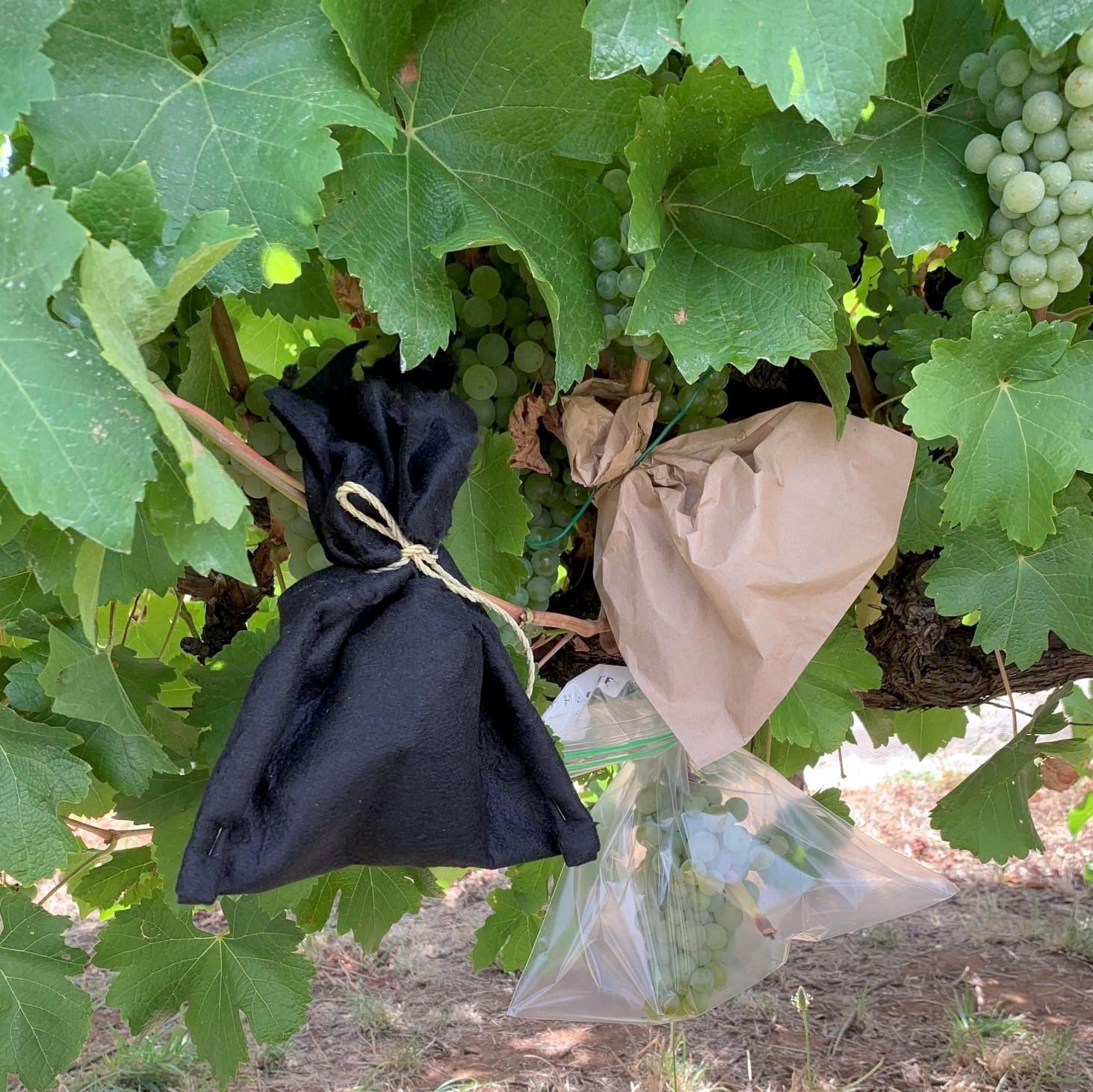Smokescreen: New tool for the wine industry to prevent smoke taint

Trial of activated carbon hood technology to prevent smoke taint in grapes.
The University of Adelaide is leading trials of new smoke taint protection technology, designed to save wine grapes from the crippling impact of bushfires.
Wine scientists from the School of Agriculture, Food and Wine have teamed up with Peter Michael Winery in the United States, to develop and test a new tool to combat smoke taint.
Results from trials of this new technology – known as activated carbon (AC) hoods – showed promising results, protecting the grapes from 97% of smoke taint.
The findings were presented by University of Adelaide oenology expert Professor Kerry Wilkinson at the recent Australian National Wine Sector Bushfire Conference.
How do you protect wine grapes from smoke taint?
During trials, the grape clusters were covered with a specially woven activated carbon hood that successfully trapped virtually all smoke particulates. In her presentation, Professor Wilkinson showed examples and results for some of the completed experiments that proved the effectiveness of this new technology.
“We were pleased with the early results and extended those trials to a winemaking outcome that demonstrated the carbon hood to be even more promising," Professor Wilkinson said.
The early field trials involved the application of smoke to Semillon grapevines and showed that enclosing fruit in the activated carbon hoods prevented exposure to smoke, such that the volatile phenols measured as chemical markers of smoke taint were barely detected in protected grapes – while concentrations up to 21 ug/L were found in smoke-exposed grapes.
“Winemakers and vineyard managers have been searching for a solution to smoke exposure for several years,” said Peter Michael’s winemaker, geophysicist and oenologist, Robert Fiore.
“This new approach could be a proactive means for preventing smoke compounds from ever reaching the grapes. Much additional work is needed to make this a practical solution, but the science supports its effectiveness.”
Trials were repeated on a larger scale with Mataro grapes, to allow wines to be made and analysed. There were no significant compositional differences between the wines made with Mataro grapes enclosed in activated carbon fabric, and control wines (i.e. wines made with grapes that were not exposed to smoke).
The research was initiated by Sir Peter Michael following the devastating 2020 California fire season.
The team invites others to collaborate in this research program, including producers and manufacturers, to further develop and verify the technology.
What is activated carbon?
Activated carbon (AC), also called activated charcoal, is a form of carbon processed to have small, low-volume pores that increase the surface area available for adsorption or chemical reactions. Due to its high degree of microporosity, one gram of activated carbon has a surface area in excess of 3,000 m2 (32,000 sq ft.) as determined by gas adsorption. [source: Wiki ] This high adsorption attribute makes AC a highly effective filter for various industrial applications.
Application in winemaking has typically been used to adsorb off odors, flavors, or pigments before filtering and bottling.
Smoke taint in the grapes is a result of wildfires occurring during the growing season for wine grapes. Although wildfires early to mid growing season can result in tainted fruit, grapes appear to be more susceptible to adsorbing the contaminating smoke compounds later in the growing season before or during harvest.
How does a winery prevent the smoke particles from contacting the skin of the grape without hindering ripening? A 1996 study found in the Journal of the American Society for Horticultural Science concluded that grapes could in fact successfully ripen when covered at varying stages of maturation showing no negative impact on final wines. Expanding upon this research, the addition of activated carbon to the “covering” provided a natural opportunity to explore.
Following the successful field trials which showed the effectiveness of the activated carbon hoods against smoke taint markers in smoke-exposed grapes, additional research trials involving post-harvest smoke exposure of grape bunches were subsequently performed to further evaluate the efficacy of the activated carbon fabric - using dense smoke applications to test the fabric's protective capabilities. The volatile phenol concentrations detected in grapes enclosed in activated carbon fabric were ~2-3% of those measured in smoke-exposed grapes.
Similar results were observed when Mataro grapes were exposed to smoke, with and without protection from three different types of activated carbon fabric, on a scale that allowed wines to be made. Elevated volatile phenol concentrations were detected in wine made with smoke-exposed Mataro grapes, but there were no significant compositional differences between wines made with grapes enclosed in activated carbon fabric, and control wines (i.e. wines made with grapes that were not exposed to smoke).
